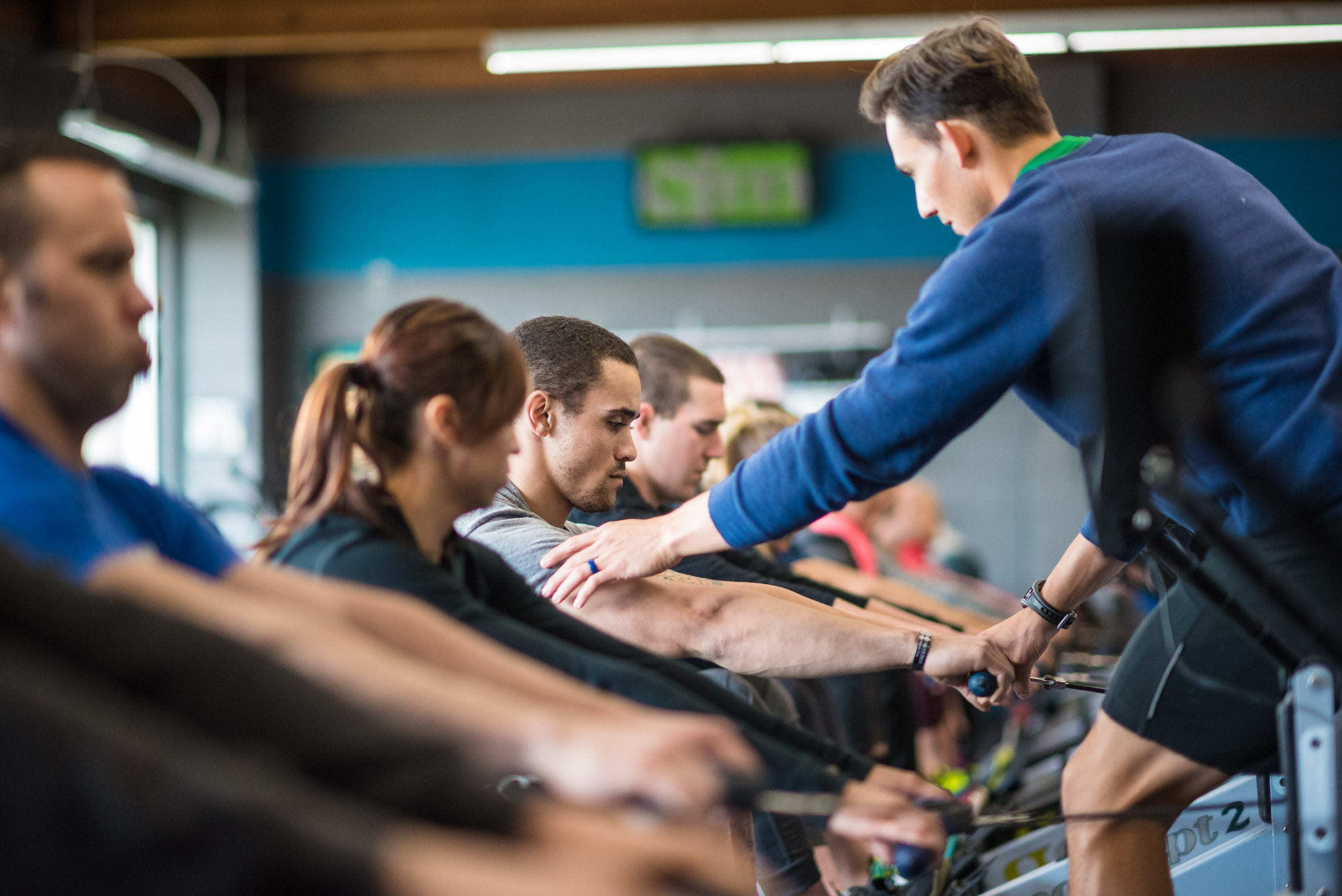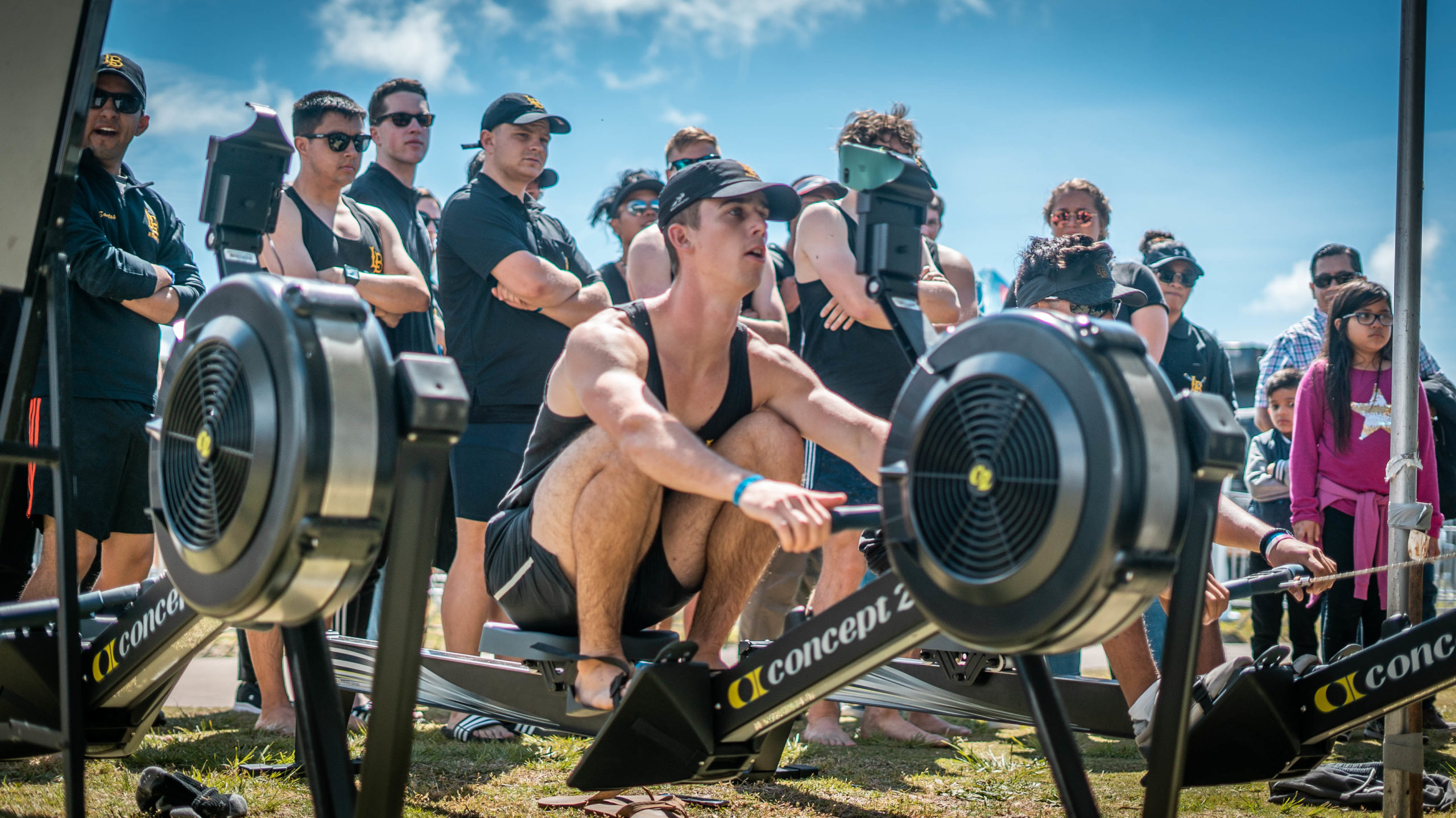
Rowing Away Low Back Pain
Rowing Your Pain Away
The primary focus in healing low back pain is restoring functional movement patterns. You were born to move in a specific way. Time, work, and the stress of life forced you to lose touch with movement.
You may have taken it for granted, not cared, or just never been taught. Whatever the case, your low back pain is a symptom of poor movement mechanics. Learning and practicing functional movement patterns is the answer to eliminating low back pain and long term health.
Over the years, working out has turned into a warrior zone of people flexing their muscles, posting selfies, and laying on the floor half dead after their workout.
It is time to change the conversation and begin to see the gym as a place to learn. A place where you can develop a physical education on how the body moves, feels, and performs.
The gym is a place where you can develop confidence and grow physically, mentally, and emotionally.
Instead of viewing equipment as weights, start to view them as tools. Tools that allow you to explore the human body through a series of functional movements.
The rowing machine is a great place to start but before we get going, “What is functional movement?”
Functional Movement from the Start
“Functional Movement.”
Those two words have become so popular in today’s fitness world that nobody ever stops to think about their actual meaning.
Your body is designed to move in a specific way.
Ever see a baby almost fall and then drop into a perfect squat? Of course you have because the principles of squatting are innate to our DNA.
Unfortunately, since you were born with them, you never spent the time to learn about them, and most often, completely neglected them until you found yourself in pain bending over to tie your shoes.
Functional Movement, simply put, is the optimal sequencing of joints as you move through space.
The easiest way to understand this is by looking at the size of the joint.
In an optimal scenario, you want to load the largest joints first.
Ideally, the largest joints and the largest muscles carry the bulk of the load.
Proper loading sequence by joint size:
Hips —> Knees —> Ankles
Shoulders —> Elbows —> Wrists
Big Joint —> Smaller Joint —> Smallest Joint
This pattern is universal in your movement and the goal of fitness is to develop and master these patterns.

Breaking Down the Hip Hinge
Rowing is a great tool for learning proper hinging patterns in a safe and effective environment.
The focus is on the hinging pattern, loading the glutes and hamstrings at the hip, then the knee, then the ankle. Big joint to small joint.
By loading the hips, the majority of your body weight will be absorbed through the glutes and hamstrings.
As you slide forward, there is a slight knee bend. The abdominals and back remain tight keeping the spine in a neutral position.
On the drive, the glutes, hamstrings and hips protect the lower spine and generate the power to spin the flywheel by pushing your feet into the foot stretchers. The harder you push, the more you accelerate the flywheel, the higher your power goes.
The hinging pattern always begins with the hips, loads the largest muscles to generate power and protect your low back.
Take Action
The easiest way to get a jump start on living pain free is learning these movement principles and begin to recognize them in your daily life.
If you are looking for a comprehensive guide to learn these movement principles, download The Low Back Fix’s free eBook to get a jump-start on living a pain-free life!
About the Author: Anders Varner
 Innovative and highly respected strength and conditioning expert in the fitness mecca of San Diego, founder of one of the most successful fitness centers in Southern California, the go-to trainer for people with back pain. Spent eleven years training and competing in the sport of CrossFit. Proud member of the “One Ton Club” at Hard Nocks South, the home of John Cena.
Innovative and highly respected strength and conditioning expert in the fitness mecca of San Diego, founder of one of the most successful fitness centers in Southern California, the go-to trainer for people with back pain. Spent eleven years training and competing in the sport of CrossFit. Proud member of the “One Ton Club” at Hard Nocks South, the home of John Cena.
Leave A Reply Cancel reply
No products in the cart.




1 Comment
Hi,
What about rowing when you have a herniated disk in the lower spine? Can you still do rowing, if so how hard?
Best Regards
Jan G